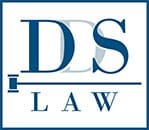Land registration is the general system that determines ownership over particular pieces of land. It lists down information such as the name of the owner(s), the technical description of the land, and other relevant information. Records of this and of matters relating to land possession and other rights are kept and issued in the Register of Deeds.
PD 1529
The basic law that covers land registration is Presidential Decree No. 1529, also known as the Property Registration Decree. Superseding all other laws related to registration of properties, it covers:
- Original registration of title
- Registration of voluntary and involuntary dealings
- Reconstitution of lost or destroyed original Torrens titles
Certificate of title
A certificate of title is a document or record that acts as proof of ownership of a property. It can come in some forms such as a tax declaration, a deed of sale, or a Torrens Certificate of Title.
Torrens title
Torrens title is a system of land registration and land transfer that relies on a state-maintained register of land holdings. The person recorded as the owner of a property in the register is the absolute owner of that property. It is considered conclusive and uncontestable proof of ownership and cannot be altered. This simplifies dealings involving land ownership because it removes the need for multiple documents.
The Torrens system was started by Sir Robert Torrens in South Australia in 1858. The Philippines adopted the system on November 6, 1902, under Act No. 496 or “The Land Registration Act.”
Parts of the title
- Title Form Information
- Type of form
- Date of revision
- Serial number
- Survey Information
- Parcel identity
- Location
- Adjoining parcels
- Other related information
- Registration Information
- Title number
- Place, time, and date of registration
- Name and signature of registrar
- Other related information
- Ownership Information – Names of all owners of the land, their citizenship, civil status, and postal address
Land registration types
The two kinds of land registration are original registration and subsequent registration.
Original registration is when an Original Certificate of Title (OCT) has been issued to an owner by the Register of Deeds for the first time.
A subsequent registration, on the other hand, is when the originally issued land title is cancelled and replaced by another title. This is done in cases of sales or donations, with the new owner being issued a Transfer Certificate of Title (TCT). All subsequent transfers shall be issued with Transfer Certificates.
Who may apply?
Section 14 of PD 1529 states that the following persons may file for registration of title to land, whether personally or through their duly authorized representatives:
- Those who have been in open, continuous, exclusive, and notorious possession and occupation of alienable and disposable land since June 12, 1945, or earlier.
- Those who have acquired ownership of private lands by prescription.
- Those who have acquired ownership of private lands or abandoned river beds by right of accession or accretion.
- Those who have acquired ownership of land in any other manner provided for by law.
Confirmation of incomplete titles to alienable lands
An amendment to RA 9176 set a specific schedule for the application of free patents for lands with no definite ownership or those considered disposable public domain lands.
According to the said amendment, filing of free patents may be done up to December 31, 2020. The said period for filing is applicable for lands not exceeding 12 hectares.
This is welcome news for small landowners whose property boundaries were not clearly defined, as well as those with properties lacking the necessary documents to prove ownership.
For more information on land registration and ownership, schedule a consultation withDuran &Duran-Schulze today. You can also email info@duranschulze.com or call (+632) 478 5826.
